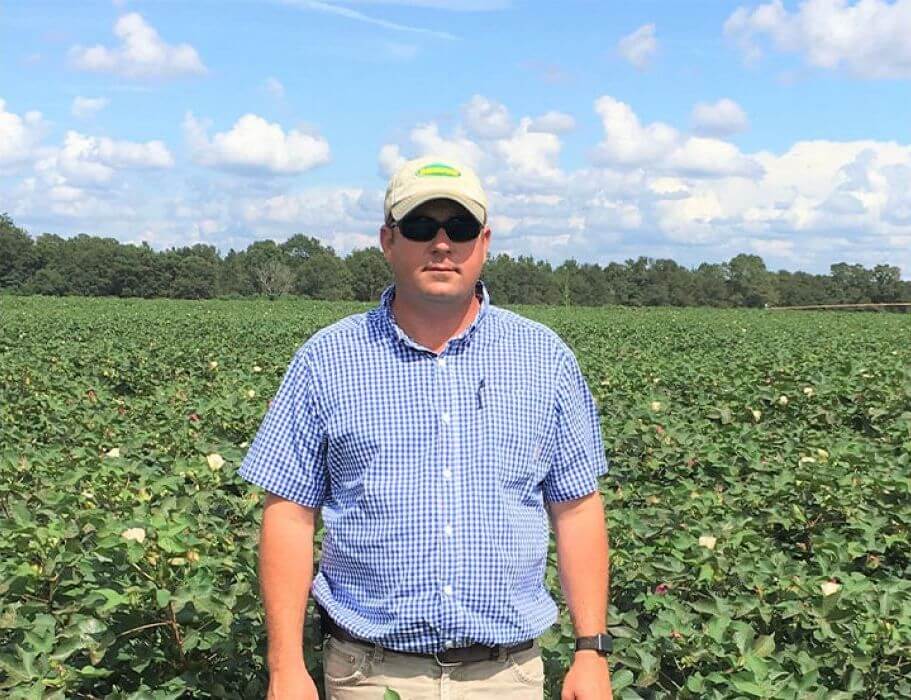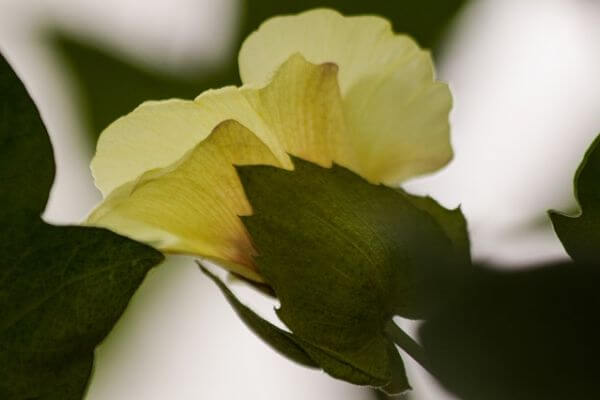
Neil Lee, McCleskey Cotton, Dawson, GA
Imagine a Season without Foliar Sprays for Thrips
As most growers, consultants and researchers will painfully attest, thrips were extremely heavy and problematic throughout most of the Southeastern cotton and peanut growing region in 2019.
From Georgia, Alabama to the Carolinas, thrips showed up early and with a vengeance on cotton and peanuts. In some pockets, it was blamed largely on the weather. Sparse early season precipitation left a lot of fields high and dry at crop emergence – a literal piercing-sucking feast for thrips. With little healthy plant resistance to the onslaught, young seedlings were susceptible from the cotyledon stage through the first 4-6 weeks of development.
By the time the rain started hitting, there was considerable damage to many cotton and peanut crops in the Southeast. One, two or even three early season thrips sprays were common just to coax the crops along.
Not everyone was singing the blues, however. Growers who invested in systemic, granular, at-plant pesticides were largely whistling a different tune.
“For a few years, we used seed treatments and foliars for thrips,” says Neil Lee, Vice President of Lee Farms, a division of McCleskey Cotton Company in Dawson, GA. “Before that, we had used Temik aldicarb at plant, but that product was unavailable for several years.”
When aldicarb came back on the market in 2006 marketed under the brand name AgLogic™ aldicarb, Lee jumped on the opportunity. “I’ve known for years; my dad has known for years, what it can mean for a cotton crop,” he says.
“We really saw it in 2019. Everyone was having problems with thrips.”
The McCleskey operation consists of almost 6,000 acres of cotton – about 90 percent Deltapine varieties. In 2019, he didn’t bother with a test plot when it came to AgLogic™ aldicarb. “We applied it to all of our cotton acreage,” he says. “Hind-sight is always 20/20, but I’m glad we made that decision.”
Lee applied AgLogic™ aldicarb at a rate of 5.0 lbs. per acre. Approximately 85 percent of McCleskey cotton is irrigated, but Lee also applied it to the other 15 percent that was dryland.
“Even the dryland looked good,” he says. “You could see it almost from the moment it emerged, whether it was irrigated or dryland. There was definitely an earliness factor. It jumped out of the ground. We had the occasional hopper box that stopped up, and you could see those rows throughout the entire season.”
Between the thrips control and earliness factor, Lee credits AgLogic™ aldicarb with a decent crop in 2019. “If you look at the overall equation, it works,” he says.

Even though AgLogic™ is initially a larger investment than seed treatments, Lee says he doesn’t regret the investment.
“To me, the seed treatments were no comparison to AgLogic™ aldicarb,” he says. “They either lost efficacy or just didn’t work as well. We usually had to spray. AgLogic™ saved us at least one foliar application across the entire acreage.”
Another issue, according to Lee are other early season pests that factor into the economic equation.
“We have reniform nematodes on some of our fields, and root-knot can be a problem,” he says. “AgLogic™ definitely helps with that. My dad used Temik aldicarb from day one when he started farming. He hated to see it go and was relieved when it came back under the name AgLogic, because we saw our nematode numbers increasing. That was in addition to saving the extra spray for thrips.”
The preliminary yield results are in, according to Lee. “Looks like our irrigated acreage will average 1350 lbs. per acre, and our dryland will average 775 lbs. per acre,” he says.
Asked about his plans going forward, he replied: “As long as it’s available, I wouldn’t grow another acre of cotton without it.”